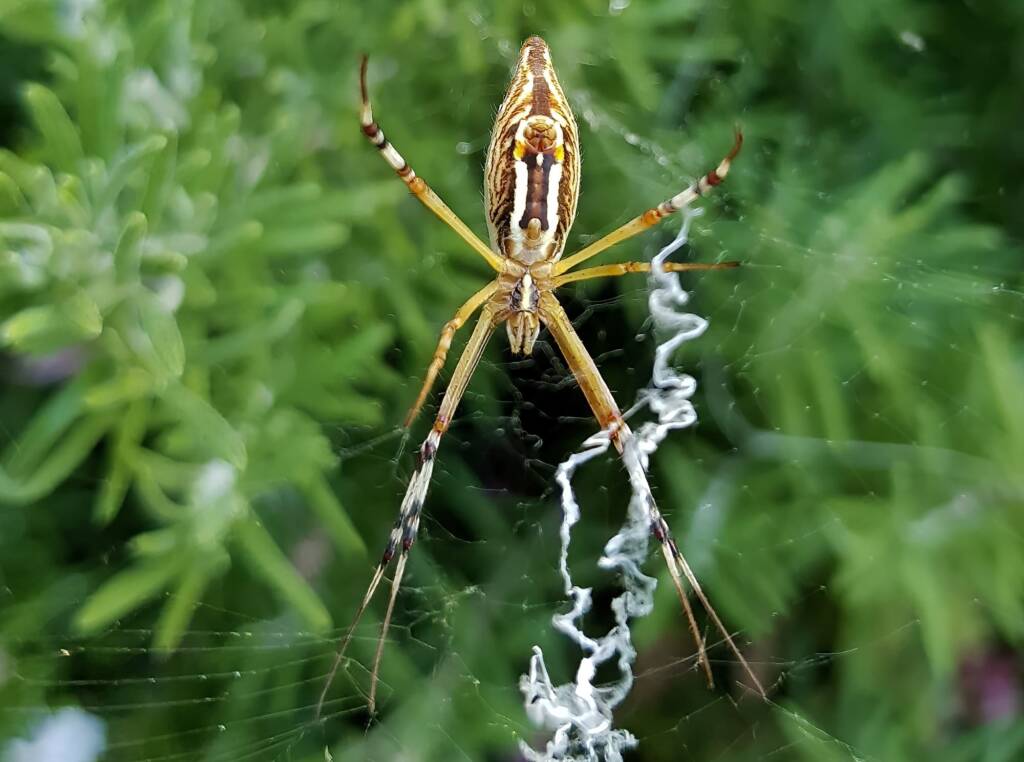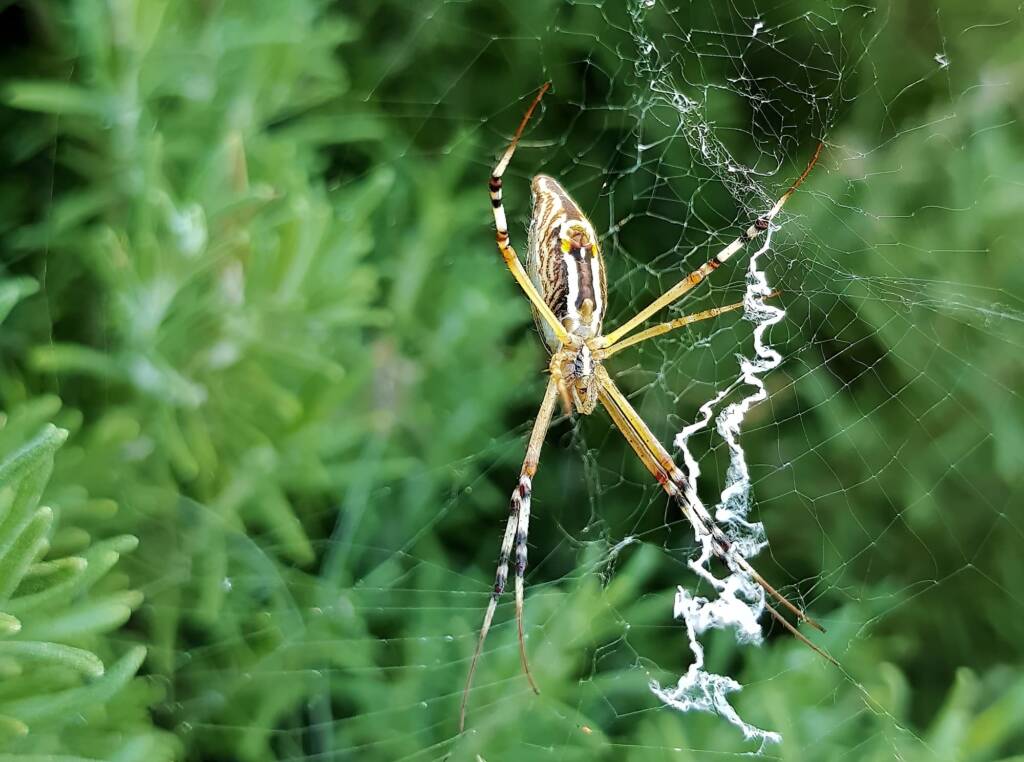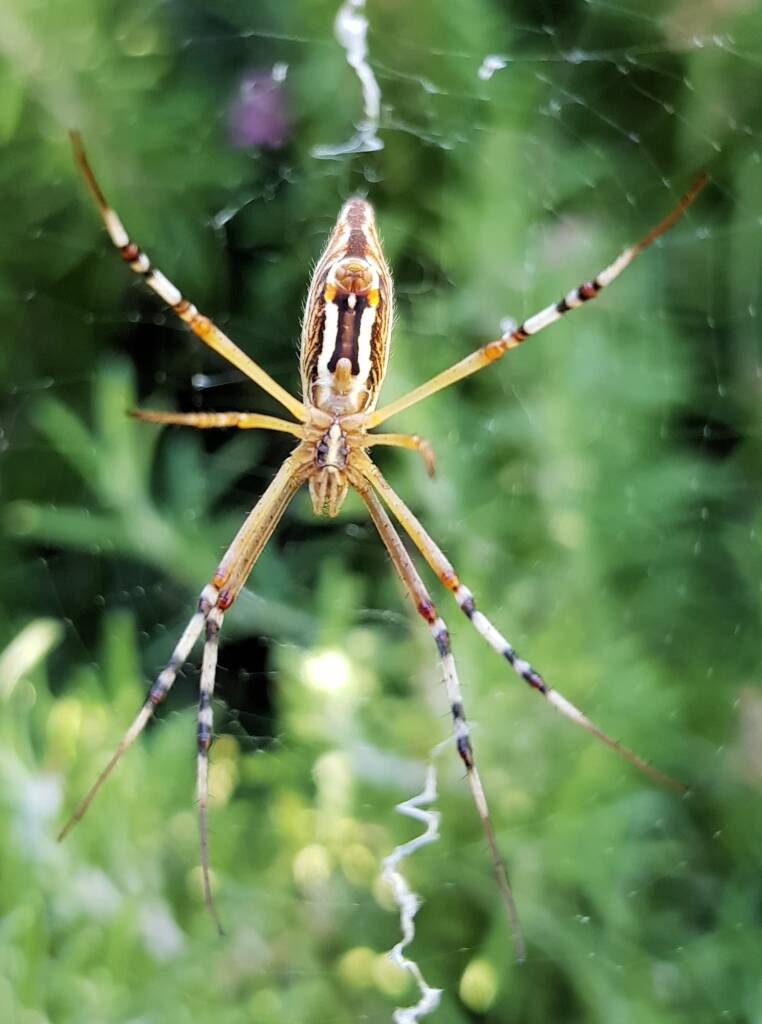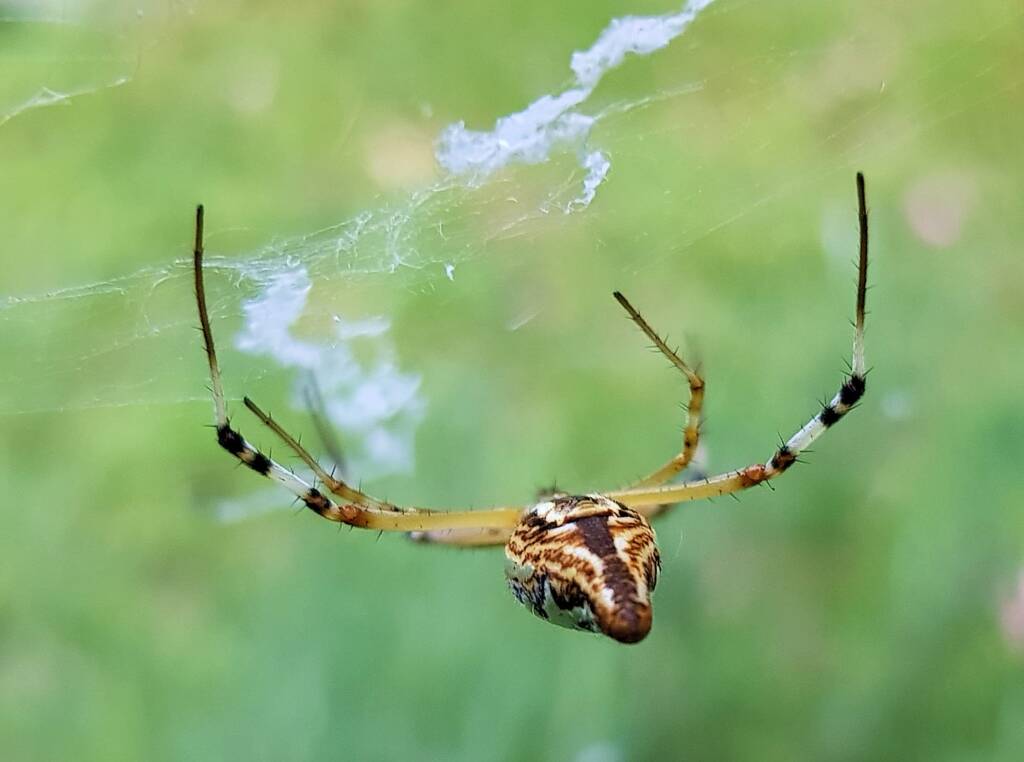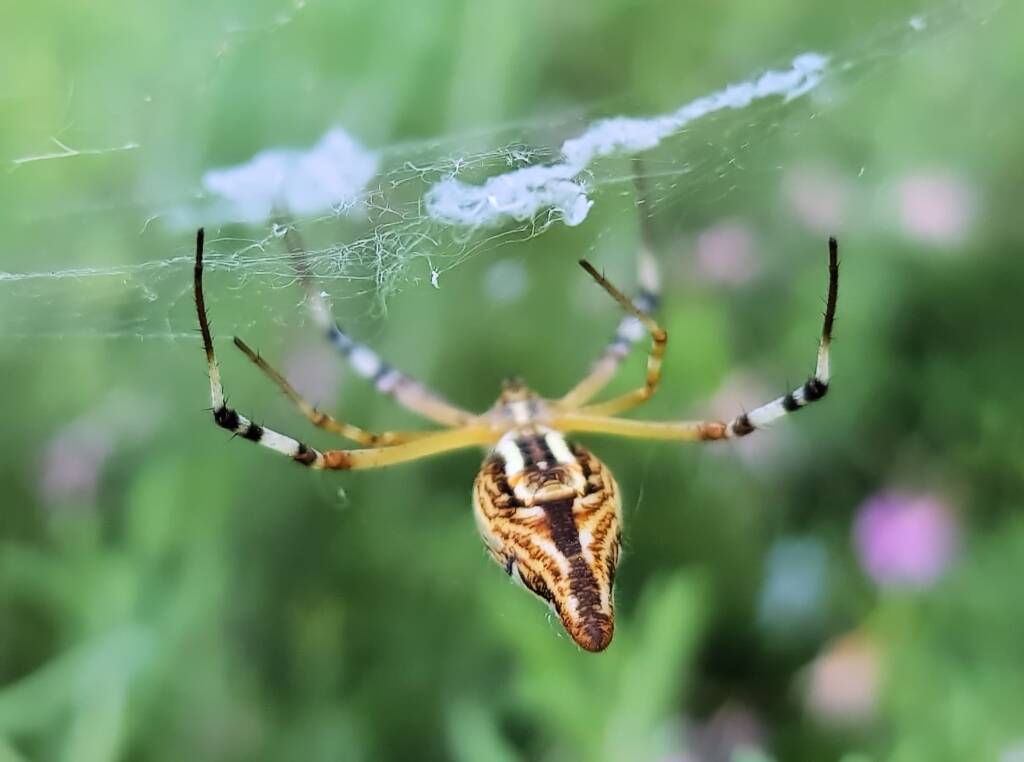Argiope protensaEgg Sac Prey Web & Stabilimentum
The web of Argiope protensa is a fragile with an almost circular shape, that is strung between stems of small shrubs and even tall grasses. Like other spider webs, it is used to capture prey, although there is an interesting study from 1999 suggesting that the stabilimentum is a warning to day-time flying birds of the web’s presence and so to avoid it.1
The pictured web structure here is strung across the stems of a rosemary bush.

In the Argiope protensa web, there is often a visible stabilimentum, which in some webs may be absent, although this is not in the form of the X shape like other St Andrew’s Cross spiders.

A stabilimentum is the decorative web structure within the webs of some species of orb-web spiders. Often a distinctive zig-zag pattern, whilst those of most Saint Andrew’s Cross spiders have a distinctive X shape, there are other shapes, including a zig-zag line (as with Argiope protensa), but with broken in the centre, where the spider sits.
In the following photo, the Long-tailed St. Andrews Cross Spider has caught a fly in the web. The spider is thought to consume most insects prey it catches in the web, and discard others they find distasteful.

Footnote & References
- Do stabilimenta in orb webs attract prey or defend spiders?, Todd A. Blackledge, John W. Wenzel, Behavioral Ecology, Volume 10, Issue 4, 1 July 1999, Pages 372-376, https://academic.oup.com/beheco/article/10/4/372/2252323
- Do stabilimenta in orb webs attract prey or defend spiders?, by Todd A. Blackledge, John W. Wenzel, Behavioral Ecology, https://academic.oup.com/beheco/article/10/4/372/2252323
- The Function of Stabilimenta in Spider Webs, by Emma Clodfelter ’21, Central College, Writing Anthology, https://central.edu/writing-anthology/2020/07/06/the-function-of-stabilimenta-in-spider-webs/
Argiope protensaEgg Sac Prey Web & Stabilimentum
SpidersIndex of Spider Images Spiders in Australia Araneidae — Orb Weavers Arkys Australian Huntsman Spider Barking Spider Black House Spider Carepalxis sp Celaenia sp Crab Spiders Deinopidae — Net-casting Spiders Dolomedes sp Dolophones sp Flower Spiders Hackled Orbweavers (Uloboridae) Jewel Spider Jumping Spider Long Jawed Spider (Tetragnatha sp) Lynx Spider (Oxyopes) Mangrovia albida Maratus volans Missulena occatoria (Red-headed Mouse Spider) Miturgidae Nicodamidae (Red and Black Spider) Ogre-faced Net-casting Spider Poltys sp (Twig Spider) Redback Spider Scorpion-tailed Spider (Arachnura higginsi) Thomisidae Tiger Spider (Trichonephila plumipes) White-spotted Swift Spider (Nyssus albopunctatus) Wolf Spider



